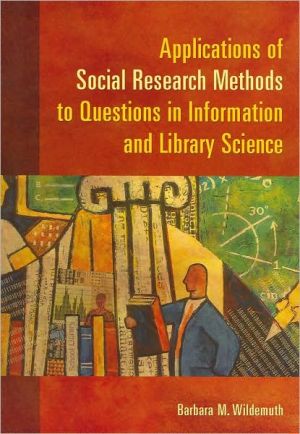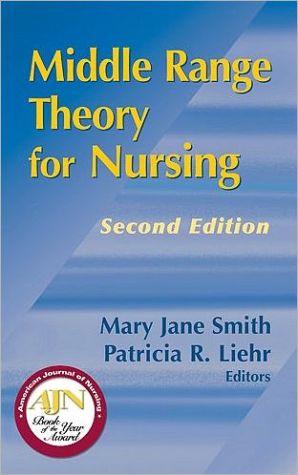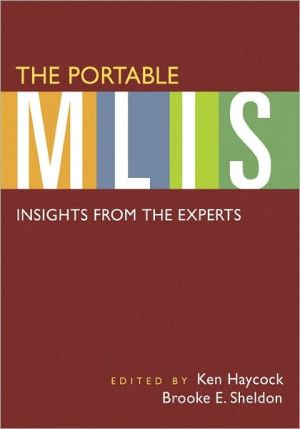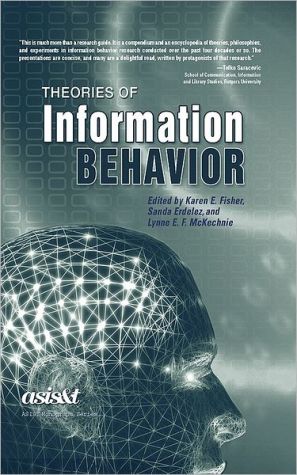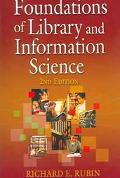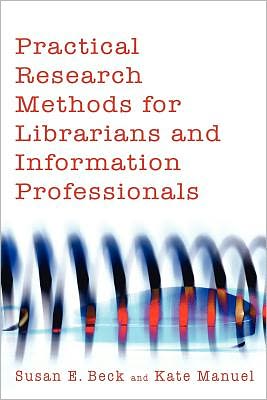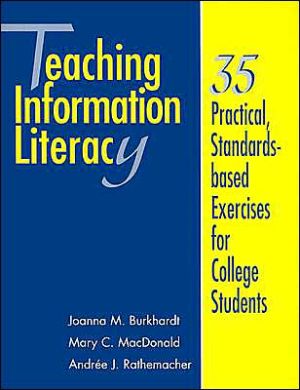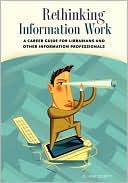Applications of Social Research Methods to Questions in Information and Library Science
For many practitioners, best practices are often developed through significant amounts of direct experience. However, they can also be developed through the examination and application of research findings. By critically assessing existing studies within library and information science, both aspiring and experienced professionals can acquire a deeper understanding of available methods, as well as design more effective studies. In what is surely the first of its kind for librarians, Barbara...
Search in google:
For many practitioners, best practices are often developed through significant amounts of direct experience. However, they can also be developed through the examination and application of research findings. By critically assessing existing studies within library and information science, both aspiring and experienced professionals can acquire a deeper understanding of available methods, as well as design more effective studies. In what is surely the first of its kind for librarians, Barbara Wildemuth has created a book that mirrors the process of conducting a research study; at the same time, she exposes the reader to a wealth of competing and complementary techniques. Each chapter introduces a particular research method, points out its relative strengths and weaknesses, and provides a critique of two or more exemplary studies. An invaluable guide for librarians, educators and students alike. Section One considers those research questions most often asked in the field of information and library science, and explains how they can arise from practice and direct observation or from existing theories. Section Two covers a variety of research designs, as well as the sampling issues associated with those designs: case studies, naturalistic research, longitudinal studies, Delphi studies, and quasi-experimental and experimental designs. Section Three moves on to methods for collecting data: surveys, various types of interviews, historical and documentary studies, transaction log analysis, diaries, and participant observation. It concludes with a chapter discussing the ways in which any of these methods might be combined for use in a particular study.
Acknowledgments ixPart I Introduction1 Using Research Results to Improve Practice in the Information Professions Barbara M. Wildemuth 3Part II The Questions Asked2 Developing a Research Question Barbara M. Wildemuth 113 Questions Originating in Library and Information Practice Barbara M. Wildemuth 214 Descriptions of Phenomena or Settings Barbara M. Wildemuth 275 Testing Hypotheses Barbara M. Wildemuth 336 Questions Related to Theory Chad Morgan Barbara M. Wildemuth 40Part III Research Designs and Sampling7 Case Studies Songphan Choemprayong Barbara M. Wildemuth 518 Naturalistic Research Abe J. Crystal Barbara M. Wildemuth 629 Longitudinal Studies Barbara M. Wildemuth 7310 Delphi Studies Lili Luo Barbara M. Wildemuth 8311 Quasi-experimental Studies Carolyn Hank Barbara M. Wildemuth 9312 Experimental Studies Barbara M. Wildemuth Leo L. Cao 10513 Sampling for Extensive Studies Barbara M. Wildemuth 11614 Sampling for Intensive Studies Barbara M. Wildemuth Leo L. Cao 12915 Studying Special Populations Carol L. Perryman Barbara M. Wildemuth 138Part IV Methods for Data Collection16 Historical Research Chad Morgan Barbara M. Wildemuth 14717 Existing Documents and Artifacts as Data Barbara M. Wildemuth 15818 Transaction Logs Laura Sheble Barbara M. Wildemuth 16619 Think-aloud Protocols Sanghee Oh Barbara M. Wildemuth 17820 Direct Observation Barbara M. Wildemuth 18921 Participant Observation Barbara M. Wildemuth 19922 Research Diaries Laura Sheble Barbara M. Wildemuth 21123 Unstructured Interviews Yan Zhang Barbara M. Wildemuth 22224 Semistructured Interviews Lili Luo Barbara M. Wildemuth 23225 Focus GroupsBarbara M. Wildemuth Mary Wilkins Jordan 24226 Survey Research Carolyn Hank Mary Wilkins Jordan Barbara M. Wildemuth 25627 Measuring Cognitive and Affective Variables Barbara M. Wildemuth 27028 Developing New Measures Songphan Choemprayong Barbara M. Wildemuth 278Part V Methods for Data Analysis29 Content Analysis Kristina M. Spurgin Barbara M. Wildemuth 29730 Qualitative Analysis of Content Yan Zhang Barbara M. Wildemuth 30831 Discourse Analysis Barbara M. Wildemuth Carol L. Perryman 32032 Analytic Induction Kristina M. Spurgin Barbara M. Wildemuth 32933 Descriptive Statistics Barbara M. Wildemuth 33834 Frequencies, Cross-tabulation, and the Chi-square Statistic Barbara M. Wildemuth 34835 Analyzing Sequences of Events Barbara M. Wildemuth 36136 Correlation Barbara M. Wildemuth 37537 Comparing Means: t Tests and Analysis of Variance Abe J. Crystal Barbara M. Wildemuth 383Part VI Conclusion38 Putting It All Together Barbara M. Wildemuth 395Index of Authors of Examples Discussed 405Subject Index 409About the Contributors 419
\ From the Publisher"Aimed at social scientists and library science professionals, this guide to research methodologies evaluates the strengths and weaknesses of each type of research design. Wildemuth (information and library science, U. of North Carolina at Chapel Hill) reviews the most common research questions asked in the fields of library and information sciences and analyzes sampling issues from case studies, naturalistic research, longitudinal studies, Delphi studies and experimental designs. Data collection methods are also reviewed, including surveys, interviews, historical studies, transaction log analysis and participant observation."\ -\ Reference & Research Book News\ "This is a valuable addition to any professional or library science collection where a need exists for a basic yet thorough introduction to the area of research methods and methodology."\ -\ ARBA\ "In this earnest, encyclopedic, energetic and easily accessible book, Barbara Wildemuth has produced a landmark text that will be of great use to information and library science master and doctoral students, as well as to professors and professionals in library and allied fields. . . .This book will easily achieve its stated goal of aiding its readers in designing and publishing research projects that will eventually improve professional practice."\ -\ College & Research Libraries\ "…fills an important gap, connecting the dots between social science research methods and real-world applications in Library and Information Science research. It is very strongly recommended for use in graduate school Library and Information Science courses that teach research methods from the context of social science. This text serves as an excellent reference for any librarian who conducts research, for example, academic librarians who are faculty members."\ -\ Catholic Library World\ \ \
